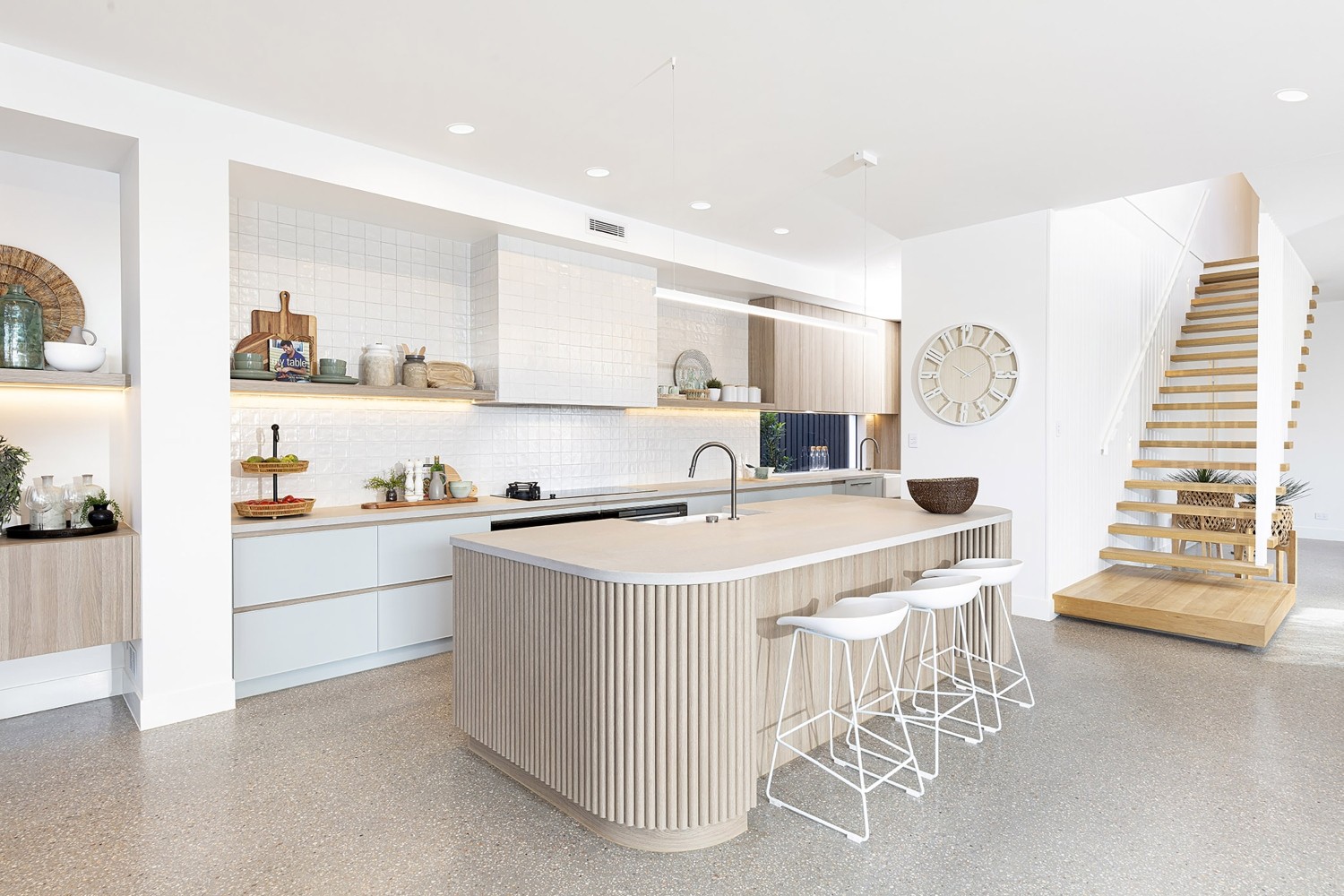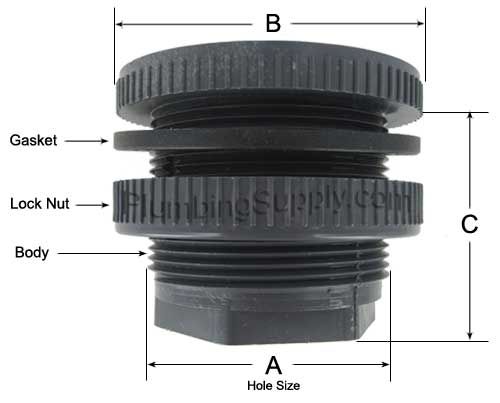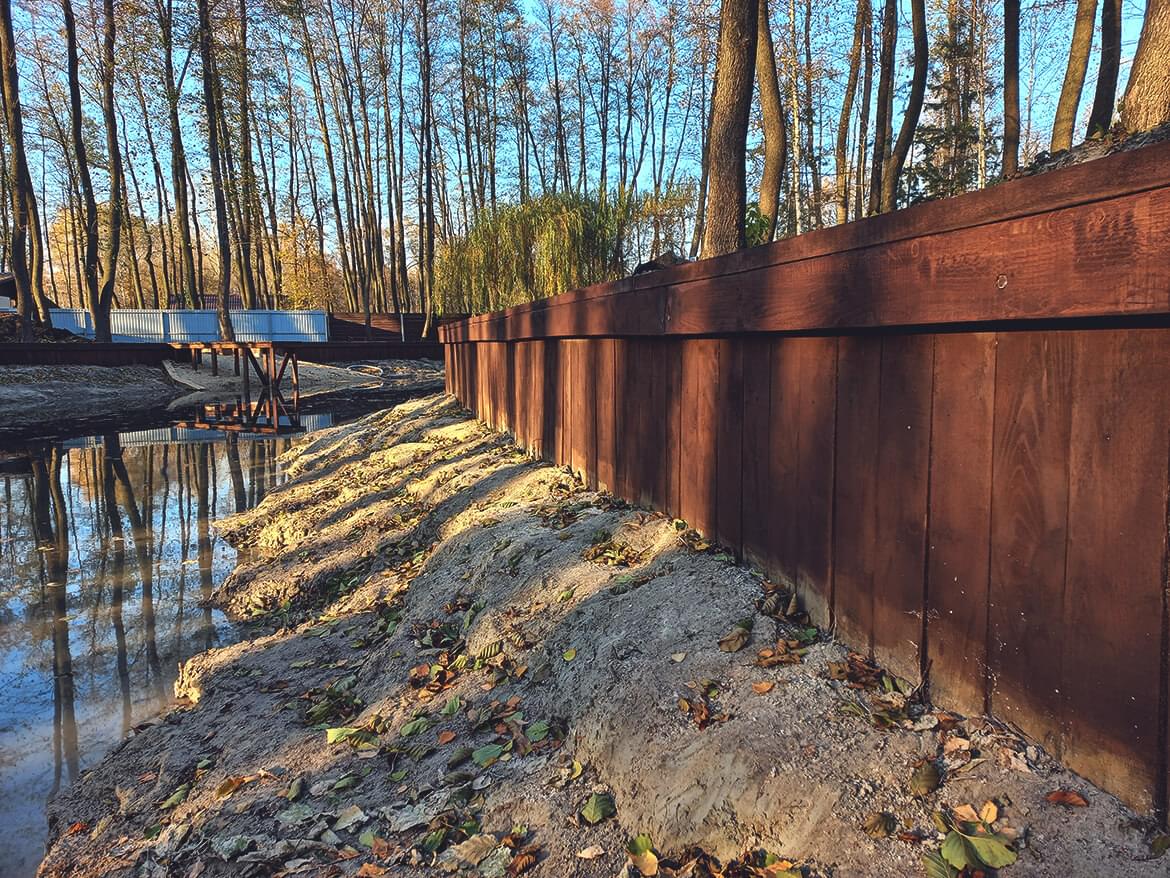Discovering the Numerous Uses Bulkhead Frameworks in Modern Style
Bulkhead structures play a substantial duty in contemporary design, serving both practical and visual purposes. They can specify areas, boost storage space solutions, and enhance illumination. In commercial settings, they act as centerpieces that reflect brand name identity - Bulkhead on Lake Livingston. In addition, their combination typically sustains audio administration and lasting practices. Comprehending the complete scope of their applications reveals much about contemporary layout patterns and user experience. What cutting-edge uses bulkheads might emerge in the future?
Defining Bulkhead Structures
Bulkhead frameworks play an important duty in modern-day architecture, offering as essential parts in numerous building designs. These frameworks are usually specified as elevated ceilings or systems, usually used to conceal mechanical systems, electrical wiring, or plumbing. Bulkheads can be discovered in both domestic and industrial setups, where they supply a seamless mix of performance and appearances. Their design can integrate lighting fixtures and various other attractive aspects, enhancing the overall aesthetic charm of a space.
Typically created from products such as drywall, steel, or timber, bulkheads can be personalized to fit the building style and requirements of the building (Bulkhead on Lake Livingston). They offer not only to hide unsightly facilities however likewise to develop specified zones within open spaces. By handling the circulation of a space, bulkheads add to the spatial organization, making them a considerable facet of modern building practice. Subsequently, their meaning encapsulates both aesthetic and functional dimensions
Functional Applications in Residential Layout
Bulkhead structures play an essential role in domestic layout by assisting in space optimization techniques that optimize usable areas. Furthermore, they contribute visual design components that improve the aesthetic allure of living spaces. Furthermore, these structures provide essential structural assistance remedies, ensuring the stability and safety and security of the home.
Area Optimization Approaches
As modern household designs significantly focus on effective use of area, innovative techniques arise to maximize capability without sacrificing looks. One noticeable strategy entails the integration of bulkhead structures, which can delineate areas while offering essential storage solutions. These frameworks can be used to create vertical storage units that boost both organization and access. In addition, multi-functional furnishings, such as exchangeable sofas and foldable tables, enhances bulkhead layouts, allowing areas to adapt to differing needs. Open up flooring plans additionally optimize spatial flow, encouraging adaptability being used. Integrating built-in shelving and recessed lights within bulkheads additionally adds to a streamlined environment, guaranteeing that every inch of space is used properly and harmoniously within the overall style.
Visual Layout Aspects

Architectural Assistance Solutions
In contemporary domestic layout, an efficient architectural support service is important for preserving the stability of areas while enhancing design and functionality. Bulkhead frameworks play a considerable role in this situation, working as both support and dividing elements. They can hide mechanical systems, such as plumbing and electrical wiring, while offering reinforcement to the ceiling and flooring systems. By strategically positioning bulkheads, engineers can develop specified locations within open layout, improving usability without endangering architectural security. In addition, these frameworks can suit lighting components, adding to both visual appeals and functionality. To sum up, bulkhead frameworks are crucial in household layout, using functional assistance remedies that enhance both the functionality and aesthetic allure of living areas.
Enhancing Appearances in Business Spaces
When industrial spaces welcome innovative bulkhead structures, they not only define physical limits yet likewise significantly enhance the general aesthetics of the environment. These building elements function as aesthetic centerpieces, drawing attention and creating a feeling of intrigue. By including diverse products such as timber, glass, or metal, bulkheads can reflect a brand name's identification and objective, contributing to a cohesive layout.
Additionally, the calculated positioning of bulkheads can adjust light and shadow, including depth and dimension to or else level spaces. This interaction can change a business area right into an inviting atmosphere, urging consumer interaction. Additionally, using color and appearance in bulkhead design can evoke particular emotions, boosting the total consumer experience. Eventually, the thoughtful integration of bulkhead structures boosts the visual charm of commercial areas, making them not only practical but likewise visually captivating, thereby fostering a long-term impact on site visitors.
Acoustic Efficiency and Audio Management
Reliable acoustic efficiency plays an important function in contemporary style, specifically within business rooms where sound management is important. Bulkhead frameworks can greatly improve acoustic top qualities by soaking up noise, reducing reverberation, and mitigating sound transfer in between areas. These attributes are specifically useful in atmospheres such as restaurants, movie theaters, and workplaces, where clear communication and a pleasant auditory experience are critical.
The critical positioning and layout of bulkheads can aid develop sound-buffer areas, successfully separating noisy areas from quieter ones. Products made use of in bulkhead construction, such as soft finishes and acoustic panels, add to their sound-dampening capabilities. In addition, the unification of bulkheads enables the assimilation of sound-absorbing elements without endangering visual charm. By resolving acoustic efficiency, designers can create harmonious settings that enhance comfort, boost individual experience, and promote productivity, making bulkheads an important component in the style of contemporary industrial spaces.
Incorporating Bulkheads for Reliable Area Usage
Frequently ignored, the assimilation of bulkheads in building layout can significantly enhance area usage in modern buildings. These architectural elements offer several practical objectives, providing a way to conceal mechanical systems, electrical wiring, and pipes without compromising aesthetic appeals. By purposefully positioning bulkheads, architects can develop specified areas within open floor plans, thus assisting in far better organization and circulation.
Bulkheads can integrate storage space options and lighting functions, making the most of the capability of otherwise thrown away upright room. In property setups, they might delineate zones such as kitchens or living areas, while in industrial areas, they can boost the performance of formats by plainly marking paths and job areas.
Inevitably, the thoughtful combination of bulkheads adds to a much more visually appealing and well organized atmosphere, enabling versatile spaces that can progress with the demands of their passengers. This strategy not only optimizes room but likewise cultivates a much more harmonious communication in between type and feature.
Bulkheads in Public Design

Building Aesthetic Enhancements
While numerous building aspects go for capability, bulkheads in public design offer a dual function by enhancing aesthetic allure. These structures often create aesthetic interest through their layout, incorporating seamlessly with surrounding elements. By using different materials, structures, and shades, bulkheads can add to an one-of-a-kind identity for public rooms, such as airport terminals, galleries, and libraries. Their critical positioning aids to define areas, directing site visitors while including more depth to the overall style. In addition, bulkheads can accentuate illumination, developing dynamic environments that transform throughout the day. This visual improvement not just boosts the site visitor experience but also fosters a feeling of area, making bulkheads a vital factor to consider in contemporary public architecture. On the whole, bulkheads embody the combination of kind and function.

Structural Support Solutions
As engineers seek ingenious means to boost the architectural stability of public areas, bulkheads emerge as vital elements in the style and building procedure. These frameworks offer critical support, especially in areas based on hefty foot web traffic or vibrant tons. By distributing weight evenly, bulkheads help prevent structural failing while permitting versatile style choices. In big places, such as stadiums and convention facilities, bulkheads are often integrated into the general building framework, making certain security and security. Additionally, they can facilitate the consolidation of utilities and mechanical systems, adding to the article efficiency of room usage. Inevitably, bulkheads represent a critical option in modern public design, reinforcing both capability and security in community-focused settings.
Environmental Protection Measures
Integrating environmental management measures into public design has come to be significantly crucial as urban designers prioritize sustainability together with structural support. Bulkhead frameworks serve a twin objective in this respect, acting as obstacles against disintegration and flooding while at the same time improving the aesthetic appeal of city landscapes. Their style typically includes natural environments such as vegetation, which can boost air high quality and provide habitats for wildlife. In addition, bulkheads can be engineered with absorptive products that enable water absorption, lowering drainage and promoting groundwater recharge. This assimilation of eco-friendly factors to consider not just protects the environment however likewise promotes community strength versus climate modification. By making use of bulkheads properly, architects add to lasting city growth that straightens with modern environmental goals.
Future Patterns in Bulkhead Style
Emerging fads in bulkhead design reflect a growing focus on sustainability, innovation, and performance in modern-day architecture. Developers are increasingly integrating environment-friendly products, such as recycled composites and bioplastics, to reduce ecological influence. Furthermore, the combination of clever modern technology is coming to be widespread, allowing bulkheads to serve multi-functional purposes, consisting of energy storage space and climate control.
In metropolitan setups, modular bulkhead systems are obtaining grip, offering flexibility in layout and convenience of installment. These systems can be adjusted to different landscapes, allowing for efficient room use. Additionally, aesthetic considerations are progressing; bulkheads are now being made to enhance aesthetic allure, often incorporating artistic elements that reverberate with local culture.
As climate resilience ends up being a concern, future bulkhead layouts will likely focus on flood defense and stormwater administration, making certain architectural stability while addressing environmental challenges. This change symbolizes a holistic technique to architecture that satisfies both human requirements and eco-friendly duties.
Often Asked Inquiries
What Products Are Commonly Made Use Of for Bulkhead Building And Construction?
Common products for bulkhead building and construction consist of concrete, steel, hardwood, and composite materials. These options offer resilience, structural integrity, and resistance to environmental variables, making them suitable for different applications in construction and design tasks.
How Do Bulkheads Affect Structure Power Effectiveness?
Bulkheads enhance developing energy performance by offering thermal insulation and lowering air leakage (Bulkhead on Lake Livingston). They aid keep interior temperature levels, consequently reducing home heating and cooling down needs, inevitably resulting in lower energy costs and improved environmental sustainability
Exist Any Building Regulations Specific to Bulkhead Structures?
Yes, constructing codes specific to bulkhead structures exist, varying by area. These policies typically deal with safety and security, architectural integrity, and accessibility, guaranteeing that bulkheads satisfy needed requirements for building and construction and layout within a provided territory.
Can Bulkheads Be Quickly Modified or Removed Later?
Bulkheads can often be modified or eliminated, depending upon their design and building. Nevertheless, such alterations might need cautious preparation and adherence to building codes to ensure architectural integrity and safety and security are maintained throughout the procedure.
What Are the Costs Connected With Mounting Bulkhead Frameworks?
The expenses connected with installing bulkhead structures can vary considerably, typically affected by products, design intricacy, and labor. Generally, expenses vary from modest to high, depending upon the task's particular needs and place.
Bulkhead structures play an important duty in modern design, serving as essential parts in various structure designs. Bulkhead frameworks play a necessary role in property style by promoting area optimization methods that maximize usable areas. Frequently overlooked, the combination of bulkheads in building style can greatly improve area application in contemporary buildings. As designers look for innovative methods to improve my website the structural integrity of public spaces, bulkheads arise as important parts in the style and building and construction procedure. The costs connected with setting up bulkhead frameworks can vary considerably, typically influenced by products, layout complexity, and labor.